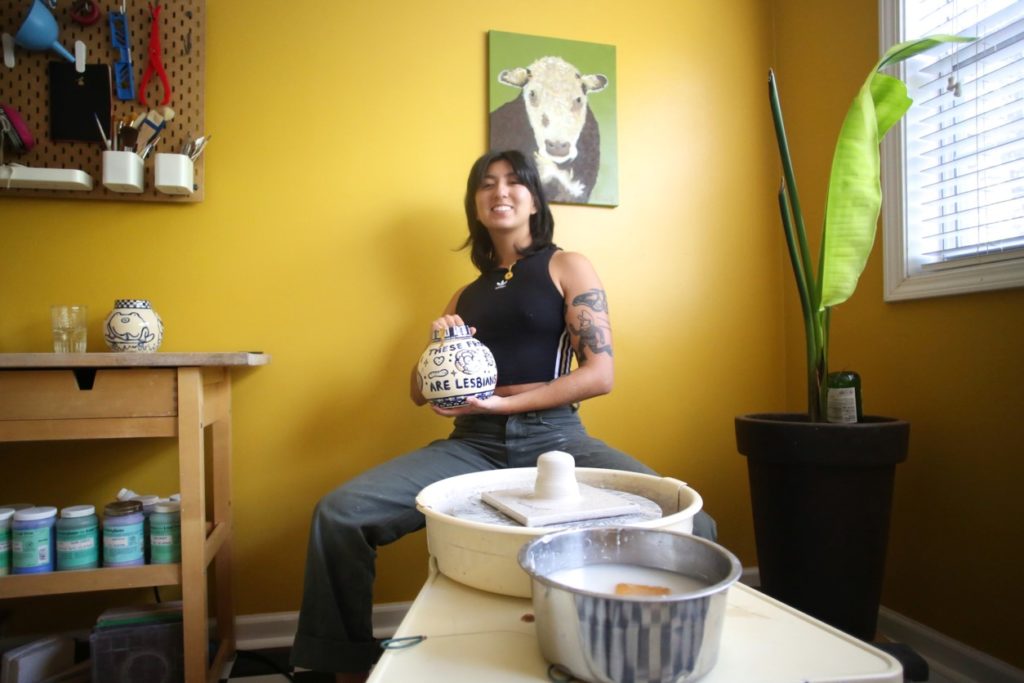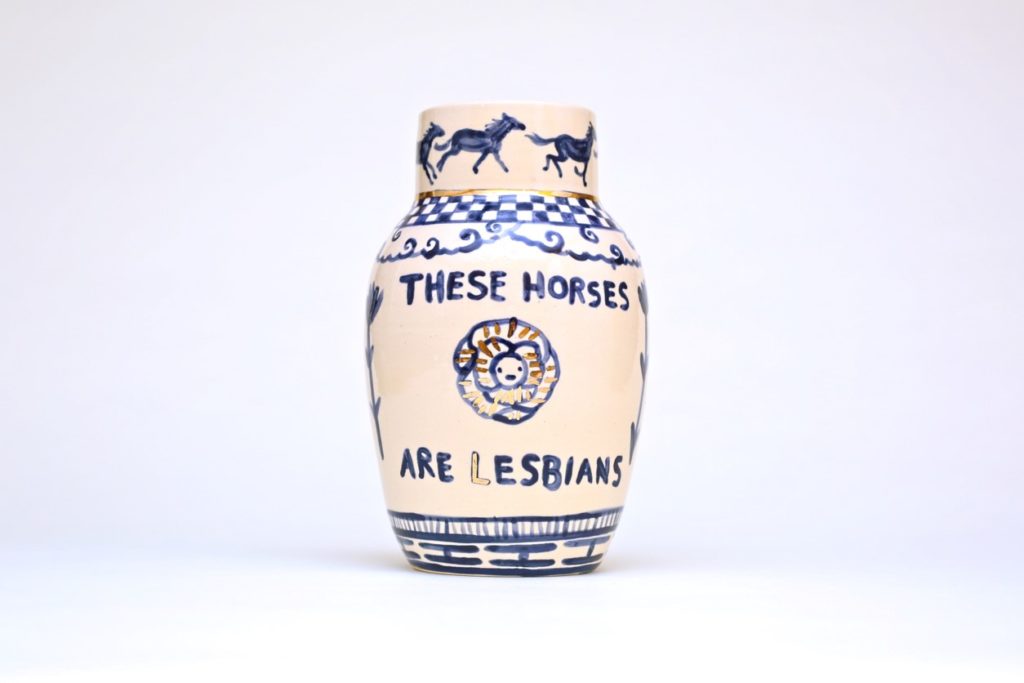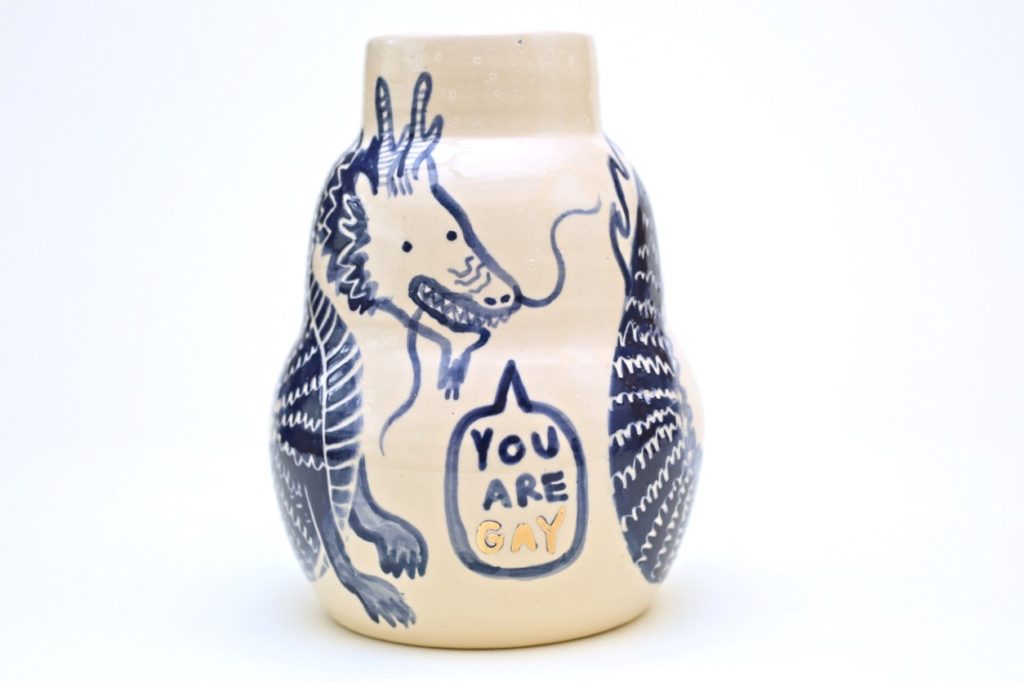
Folio asks artists and curators to gather works made with unexpected materials and adapt them for the printed page. In this issue we speak with Catalina Cheng, whose work in ceramics bridges familiar traditions, radiant pride and honouring the queer artists erased by history.
I work in many mediums like printmaking, illustration, textiles, design, photography, video, animation but nothing is as process intensive and time consuming as ceramics (to me). I love ceramics as a medium because it’s so tactile. I have such a direct relationship to the work compared to something 2D or digital that I cannot physically grasp.

It has a finicky temperament. It wants to behave in a certain way and I am at the mercy of it. It’s more of a love/hate relationship but has truly taught me patience and non-attachment. Unlike many other materials, ceramics are resistant to heat, moisture and corrosion, which makes it last so long and why we are able to find pottery and ceramic pieces from civilizations thousands of years ago. In a world that is constantly changing, ceramics remind us of our shared human history and the enduring power of creativity. I think about how my pottery will last a lot longer than I will, and how maybe archaeologists or historians might find my pots in the future and try to interpret what I was intending to say. I want them to know that I was gay and I was skating.
My latest works feature traditional porcelain themes and designs that are very sentimental and familiar to me. Growing up, my grandma had a collection of blue and white porcelain wares and even had porcelain themed wallpaper covering her home. Some of my earliest memories are where I draw my inspiration from. When I create these pieces, I am able to connect with my culture and follow the same steps as all the artisans before me. I enjoy that my designs have the same look as something from the Qing Dynasty, but I put on my own contemporary spin with my own concepts and narratives. I think about how I am able to make these pots and express myself in ways that historically queer people haven’t been able to do as openly before. A lot of my recent works are about dating, navigating queer relationships, yearning, pining, euphoria, heartbreak and healing.

Queer representation in art and history is so important and it is often forgotten or rewritten. Have you ever heard of historical figures of same-gender relationships being described as “really close friends/roommates” after reading their correspondence of love letters detailing how they dream about holding one another in the night? Historians can look at written texts and photographic evidence and completely dismiss homoerotic undertones. That’s how so many queer people have been erased from history. When I make my art, I want it to be completely and glaringly obvious that this is GAY art made by a GAY artist. No ifs, ands, or buts about it.
The intersection of being queer, Asian and Latine is where I live and how I navigate this world. My art reflects exactly that experience.
Knowing that my art and experiences resonates with people in my minority communities makes us all feel less alone.
You can find more of Catalina Cheng’s work on Instagram (@Catalina_Cheng) or at catalinacheng.square.site.
